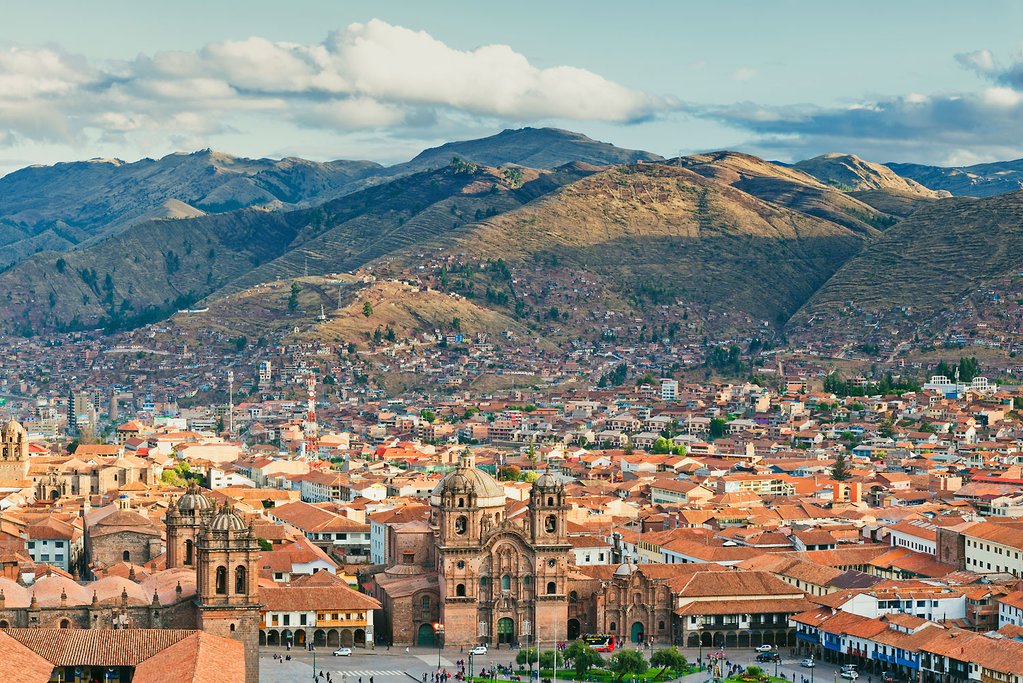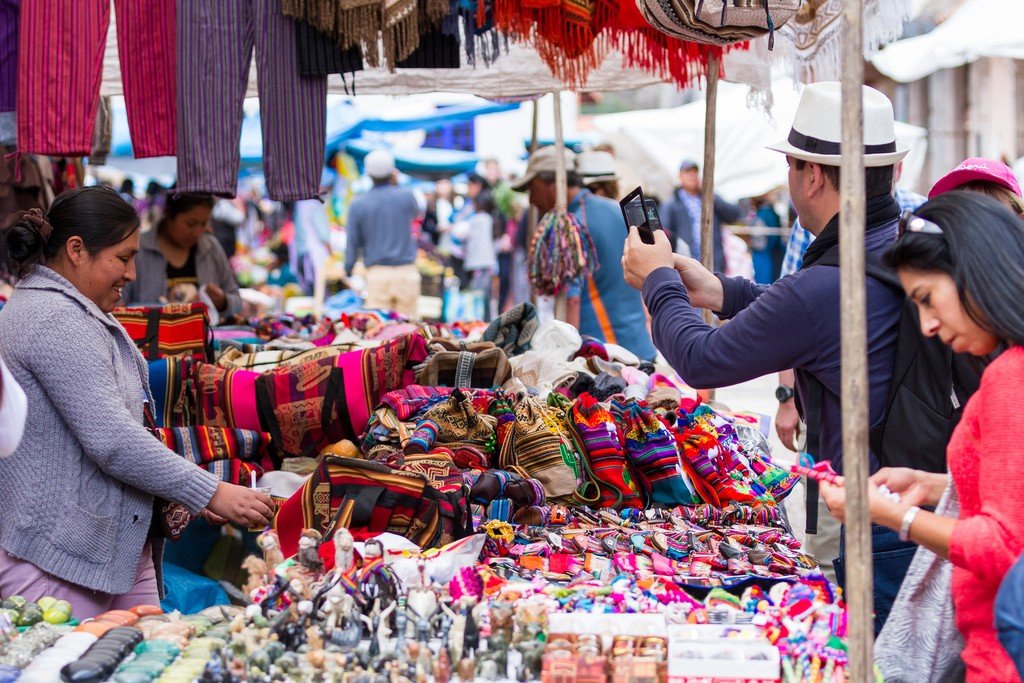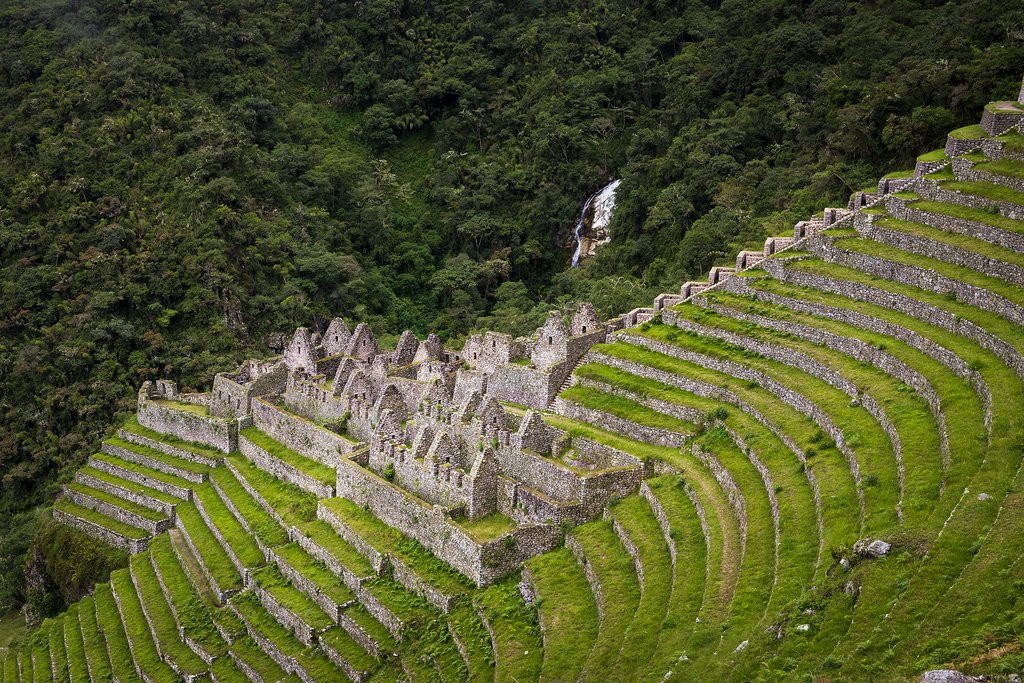Highlights
- Learn about the fascinating history of pre-Inca cultures
- Discover ancient pyramids, burials, and fortresses of northern Peru's civilizations
- Explore the beauty and culture of the Sacred Valley
- Walk in the footsteps of the Inca on the short Inca Trail
- Spend a day exploring the famed 15th-century Machu Picchu ruins
Brief Itinerary
| Day | Highlights | Overnight |
|---|---|---|
| Day 1 | Arrival in Lima | Lima |
| Day 2 | Nazca Lines | Lima |
| Day 3 | Arrival in Trujillo & Temple of the Moon | Trujillo |
| Day 4 | Chan Chan, Huaca Arco Iris & Huanchaco | Trujillo |
| Day 5 | El Brujo & Journey to Tucume | Tucume |
| Day 6 | Tucume Pyramids & Tumbas Reales Museum | Tucume |
| Day 7 | Heading to Cocachimba, Chachapoyas | Cocachimba |
| Day 8 | Hike to Gocta Waterfall | Cocachimba |
| Day 9 | Cablecar to Kuelap Fortress | Cocachimba |
| Day 10 | Cocachimba - Lima | Lima |
| Day 11 | Arrival in Cusco, Inca Ruins Tour | Cusco |
| Day 12 | Tour the Sacred Valley: Cusco - Pisac - Ollantaytambo | Ollantaytambo |
| Day 13 | Maras & Moray Tour | Ollantaytambo |
| Day 14 | Short Inca Trail to Machu Picchu: Ollantaytambo - Km 104 - Aguas Calientes | Aguas Calientes |
| Day 15 | Machu Picchu Excursion: Aguas Calientes - Machu Picchu - Cusco | Cusco |
| Day 16 | Departing Cusco |
Detailed Itinerary
Day 1: Arrival in Lima

¡Bienvenidos! Welcome to Lima, Peru's largest city and central metropolitan hub, and home to one-third of the country's population. Located at the site of a pre-Columbian indigenous Ychsma settlement, which was conquered by the Inca empire in the 15th century and later by the Spanish conquistadores, Lima has a fascinating history and a diverse mix of cultures. Amerindian, European, Afro-Peruvian, and Asian—especially Chinese and Japanese—influences make Lima a dynamic and exciting city to explore.
Lima's breezy location on the Pacific Ocean and mild desert climate make it the perfect city for exploring on foot. Head downtown to mingle with locals, stretch your legs, and grab a bite to eat in one of the many award-winning restaurants.
Suggested activities include:
- Explore the historic center of Lima, a UNESCO World Heritage Site packed with fascinating Spanish architecture. Start with a scenic tour of the colonial downtown, which emanates from the main square. Stroll over to the 16th-century Cathedral, which took 80 years to construct and was built in the grandiose style of the Spanish Empire.
- Visit the Casa Aliaga, a colonial mansion granted by chief conquistador Francisco Pizarro to Jerónimo de Aliaga, one of his captains, in 1535. This is the only house from that era that still belongs to the same family.
- Stroll around the Pueblo Libre district to the privately owned Larco Museum of pre-Columbian art, housed in a beautifully restored viceregal mansion built over a 7th-century pre-Columbian pyramid. The museum boasts a vast pre-Colonial collection of gold and silver artifacts.
- In the evening, head to the eclectic "Love Park" in the upscale coastal district of Miraflores, where you can admire a huge kissing statue and beautiful mosaic walls. The park is built on the cliffs of Chorrillos and is a perfect place to enjoy a spectacular sunset over the Pacific.
- Enjoy a nightcap at an open-air cafe or restaurant in the diverse Miraflores neighborhood.
Day 2: Nazca Lines

After breakfast, make your way south of Lima to the Pisco airport. From here you will take a 90-minute flight south aboard a 12-passenger Cessna Grand Caravan to view the sprawling Nazca Lines. You will get a chance to see many of the most famous geoglyphs, including the hummingbird, dog, tree, whale, lizard, and more.
These massive images, the longest of which are 1,200 ft (370 m), vary from geometric lines to figures of animals and people. Due to the stable environment of the Nazca desert, these geoglyphs—which were created by removing the top layer of iron-oxide coated pebbles to reveal the light-colored clay underneath—have been remarkably well preserved.
In the evening transfer back to Lima to relax for the evening.
Day 3: Arrival in Trujillo & Temple of the Moon

After breakfast, transfer to the Lima airport to board your flight to Trujillo. Upon arrival transfer to your hotel. Once you've settled in, settle out to see the Temple of the Moon, a pre-Hispanic mud pyramid, sacred to the Moche Civilization which flourished in this area from 100-750 C.E. Exquisite colorful murals decorate the walls of the Temple of the Moon, which has been built and re-built several times. You will notice the religious symbol of the Ai-Apaec, or "The God of the Mountains," appearing many times on the walls of the temple.
Despite the prevalence of archaeological ruins, the Mochica culture is not dead. After visiting the temples and museum, continue to a pottery and crafts shop to view and learn about the traditional methods of handicrafts that have been preserved by the Mochica people over the centuries.
Day 4: Chan Chan, Huaca Arco Iris & Huanchaco

Head out in the morning for a full day of sightseeing near Trujillo. Your first stop is the Huanco Arco Iris, or Rainbow Temple, named for the mysterious and colorful high reliefs found on its walls. From here, continue to the world's largest mud-brick citadel: the Chan Chan fortress. This city was once home to 100,000 people of the Chimu culture, with vast buildings, royal palace rooms, and sprawling workshops to house the city's artisans.
Continue to Huanchaco, a traditional fishing beach town famous for its totora reed boats, known locally as the "Caballitos de Totora". These boats, made out of the thick and buoyant totora reed, have been used for fishing and surfing for centuries. Enjoy lunch in the seaside town, then return to Trujillo in the afternoon. If there's time, take a detour to explore the small historical city center of Trujillo before returning to the hotel for the evening.
Day 5: El Brujo & Journey to Tucume

In the morning, set off for the pyramids at Tucume in the nearby region of Lambayeque. Along the way, stop at the archaeological site of Huaca El Brujo. Believed to have been inhabited by humans for roughly 5,000 years, the site is mainly associated with the Moche culture (100-700 CE). This 98-foot tall adobe pyramid is famous for the discovery of the tomb of the Lady of Cao, also known as the Lady of Tattoos. Her tomb was the first female Peruvian mummy to be discovered dressed as a warrior and buried in a manner similar to the male aristocratic warriors, and her discovery changed perceptions of women in pre-Hispanic societies.
Stop for lunch at the seaside town of Pacasmayo, then continue to your hotel in the tranquil village of Tucume, in the countryside of Lambayeque.
Day 6: Tucume Pyramids & Tumbas Reales Museum

Start your day with a visit to the museum and the pyramids at the Túcume Archaeological Complex, the location of the last capital of the pre-Inca kingdoms of Lambayeque and Chimú. Spanning 220 acres, this complex is one of the principal pre-Hispanic conquest monuments in the north and contains fascinating architectural features such as patios and canals. Archaeologists believe that the nobility of Túcume lived in luxury — in enormous palaces decorated with drawings and exquisite jewels, surrounded by crowds of attendants including administrators, priests, servants, and talented artisans.
After lunch, head to the Museum Tumbas Reales, or Museum of the Royal Tombs, in Lambayeque, located just outside of Chiclayo. This museum contains a wealth of archaeological treasures buried with the pre-Inca Lord of Sipan. In 1987, when the tomb of the Lord of Sipan was discovered, it was compared in opulence and detail to the tomb of Tutankhamen in Egypt.
Day 7: Heading to Cocachimba, Chachapoyas

Today is a travel day. Head inland to the charming village of Cocachimba, a 7-hour scenic drive through a constantly changing landscape. You'll travel from the arid deserts of the coast to Andean peaks and through cloud forests on the same day, with plenty of opportunities to stop and stretch your legs. Arrive at your hotel in Cocachimba or Lamud (depending on lodging choices) in the afternoon and spend the rest of the day relaxing and enjoying views of the Gotca waterfall.
Chat with a local specialist who can help organize your trip.
Day 8: Hike to Gocta Waterfall

After a hearty breakfast, hit the trail for a 2-3 hour hike to the famous Gotca waterfall. The hike is approximately 3.7 miles (6km) and crosses sugarcane fields and small country roads before leading you through the misty cloud forest. This ecosystem is home to many unique wildlife species, most notably the bright orange cock-of-the-rock—Peru's national bird. After a beautiful hike, enjoy a well-earned rest by the waterfall. Brave visitors may even take a dip in the pool at the base of the waterfall, but be warned—it's cold!
In the afternoon, hike back to your lodge in Cocachimba for an afternoon of rest.
Day 9: Cablecar to Kuelap Fortress

Get an early start today for your hour-long drive to the town of Tingo. Here you'll board a cable car to get to the spectacular ruins of the Kuelap fortress, an ancient citadel of the Chachapoyas people which pre-dates the Inca empire by half a millennium. At the top, it's a 25-minute hike to the site.
The entire complex is surrounded by 65 ft (19.8 m) walls, which served as protection against invasions. This site was inhabited until the conquest by the Inca in 1470 and later the Spanish in 1534. The ruins sit majestically above a mountain ridge at 9,500 ft (2,895 m), and its towering walls and round stone houses have earned it the nickname "Machu Picchu of the North". From here, you can enjoy stunning views of the valley and the chance to spot local wildlife. The guided visit will last approximately 2 hours, after which you will head back down the mountain and return to your hotel for the afternoon.
Day 10: Cocachimba - Lima

In the morning, to the Jaen Airport, located 4 hours away, for your return flight to Lima. After landing, transfer to your hotel in the chic neighborhood of Miraflores.
Spend the evening relaxing, catching up on souvenir purchases, or going out for dinner and drinks at one of Lima's many restaurants and cafes.
Day 11: Arrival in Cusco, Inca Ruins Tour

Head to the Lima airport for your transfer flight to Cusco. After settling in, head out for your day tour of the former capital of the Inca empire, which reigned from the 13th to 16th centuries after conquering the Killke settlement on the same location.
Remember: you will be 11,000 feet (3,000 m) above sea level, so take it easy and remember to drink lots of water. Since Cusco was designed by the Incas as a city for walking, start your exploration of the narrow stone alleyways on foot. Take a walk through the plaza — if the weather is beautiful, it's a perfect place to sit on a balcony and have a cup of coca tea while adjusting to the elevation.
Suggested activities include:
- Visit the Coricancha, also known as "The Temple of the Sun." The temple was built by the Incan Emperor Pachacutec (1438 - 1572), and after the arrival of the Spaniards became the basis for the construction of the Santo Domingo Convent.
- Walk to Sacsayhuamán and next-door Quenqo, both archaeological complexes used mostly for religious and agricultural rituals, located 2.5 miles (4 km) from the city of Cusco. Built by the Killke people, Sacsayhuamán is a marvel of ancient architecture, a monolithic fortress built from giant blocks of stone, the origins and assembly of which remain a mystery.
- Discover the elaborate Puca Pucara ruins—an architectural complex of alleged military use with multiple plazas, baths, aqueducts, walls, and towers. It is believed that the entourage of the Incan emperor used it while he stayed at Tambomachay, the elaborate estate and baths nearby.
- Eat lunch at a local Peruvian restaurant and sample local flavors and cooking techniques—crackling pork, pickled vegetables, seasonal flavors, bread baked in earthen ovens, roasted vegetables, and sweet donuts make for a delicious and filling meal.
Day 12: Tour the Sacred Valley: Cusco - Pisac - Ollantaytambo

We'll leave our hotel in Cusco around 8:30 am for our drive into the Sacred Valley en route to Pisac, a village known for its traditional market and immense Inca fortress. During our visit, we will have plenty of opportunities to stop for photos as we pass terraces, irrigation canals, and picturesque mountain views.
In the afternoon, we will depart for the town of Ollantaytambo, which contains some of the best-preserved Inca architecture in the entire Sacred Valley. Roam the winding alleys and vast plazas and gaze upon a marvelous llama-shaped ruin before heading to a local hotel for the night.
Day 13: Maras & Moray Tour

This morning, you'll depart from your hotel in Ollantaytambo for your journey to Moray. Along the way, you will see the snow-capped peaks of the Andes, lush yellow fields of wheat, and some villages. Upon arrival in Moray, you'll see the three famous amphitheater-like terraces made by the Incas. These terraces are carved deep into the earth in the shape of a bowl. It is believed that the Incas once used these terraces as agricultural laboratories to determine the optimal conditions for growing crops.
When you are done exploring Moray, you will head about two miles away, to the salt mines of Maras (Salineras de Maras). This village is known as a former salt-producing center and is thought to date back to pre-Incan times. There are over 3,000 salt pools carved into the mountainside, that are filled daily by a stream of water.
In the evening, head back to your hotel in Ollantaytambo to relax for the evening.
Day 14: Short Inca Trail to Machu Picchu: Ollantaytambo - Km 104 - Aguas Calientes

Early in the morning, we will take the train from Ollantaytambo to Km 104 where the short Inca Trail starts. By train, we see how the valley turns into a canyon and the scenery begins to alter as the cloud forests appear on our approach to Machu Picchu. We will disembark the train at Km 104 and start the hike along a challenging uphill path.
Start the trek to your first archeological site—Chachabamba. This beautiful site is very well preserved thanks to its location in the valley and was likely used for religious purposes and as a gatekeeping point for this entrance to Machu Picchu.
From here ascend for 3 hours to the ruins of Wiñay Wayna (2732 m / 8964 ft), an ancient rest area for travelers on the Inca trail. Here, we'll stop to enjoy our delicious boxed lunch, with superb views of the massive green mountains and native orchids.
The trail then becomes gentler and continues through the semi-tropical cloud forest to Intipunku (Sun Gate) where you'll enjoy your first panoramic views of Machu Picchu. Descend half an hour to the citadel for a short break and an opportunity for photos.
We won't be exploring the ruins today, as it will be getting dark. After passing through the Sun Gate, we'll cross the site to take the bus down to Aguas Calientes, where you'll check into our hotel to rest and relax in anticipation of a full-day visit to Machu Picchu tomorrow.
Maximum Altitude: 2732 m / 8964 ft
Minimum Altitude: 2088 m / 6850 ft
Distance Travelled: 10.79 km / 6.67 ml (to Inti Punku)
Approximate Walking Time: 7 hours
Day 15: Machu Picchu Excursion: Aguas Calientes - Machu Picchu - Cusco

Get an early start to beat the crowds and get the best views of the ancient ruins. From Aguas Calientes, it's an easy 25-minute bus ride up to the Machu Picchu ruins.
This 15th-century Inca citadel is located at 7,970ft (2,430 m) and is a masterpiece of engineering that served as a sanctuary and retreat for the Incan Emperor Pachacutec and his royal court. Machu Picchu, which means "Old Mountain," is considered a World Heritage Site by UNESCO and is one of the new Seven Wonders of the World.
Built as a seasonal residence for the Inca family, Machu Picchu was rarely home to more than 800 people, and during the royals' absence, a mere 100 servants would remain at the site to maintain the grounds. Machu Picchu was abandoned 100 years after construction due to the Spanish conquest and remained largely hidden to the outside world until the early 20th century.
Your guide will lead you around the site and explain the different buildings and curious corners of the building complex. Approximately one-third of the site has been reconstructed into its original structure, giving visitors a sense for the grandeur and artistry of the original citadel.
After the tour, take the bus back to Aguas Calientes for lunch and then board the train to Ollantaytambo. Upon arrival in Ollantaytambo, meet your driver for your transfer back to Cusco.
Day 16: Departing Cusco

This morning, depart your hotel in Aguas Calientes and make your way to the train station for your train to Ollantaytambo. Upon arrival, take some time to explore this ancient town, then transfer to the Cusco Airport for check in to your homeward-bound flight. ¡Buen viaje!


